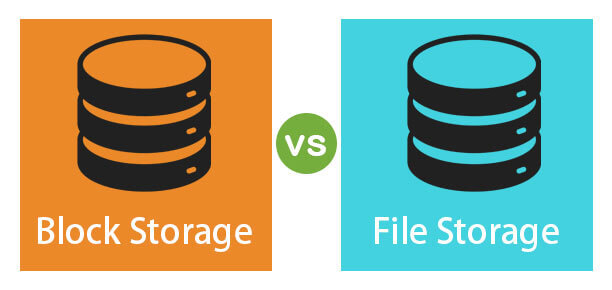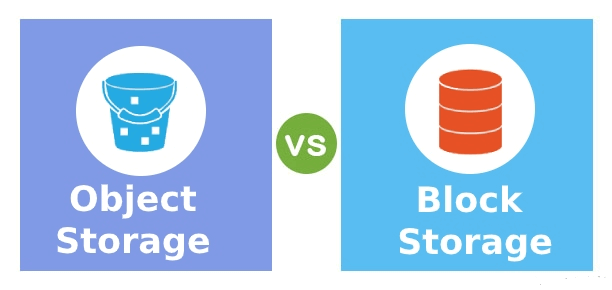Block Storage
Block storage is a data storage method. Each storage volume acts as an independent hard drive that configuring the storage administrator data and save in fixed-size chains in the block storage models. Each block has a specific location, and the only metadata assigned to each block is their address. A software program independent of storage media determines how to organize blocks through storage drives to handle block storage. The program also manages data recovery, uses metadata to find the desired blocks and then organizes the data into complete files.
Storage blocks are run by a server-based operating system (OS) and are generally accessible over network devices via iSCSI, Fibre Channel or multimode fibre. Block storage is suitable for high-performing, mission-critical applications that need stable (I / O) speed and high latency, which is often used instead of file storage in storage-area network environments. Because block storage in several enterprise software plays an important role in addition to their object storage services, several cloud providers provide block storage services.
Block storage use cases
Block storage has largely stayed on-premises, fulfilling mission-critical and data-intensive tasks with some changes. Organizations are gradually turning on the cloud for block storage as they search for ways to help their workloads that are more reliable and scalable.
RAID arrays are also an important case used for the storage of bricks. For data security and performance, multiple independent discs are combined with RAID. Block storage has the ability to independently manage the volumes of storage, which makes it a good match for RAID.
Another common use for storage at the block-level is virtual machine file systems. Block storage protocols are supported by virtualization vendors such as VMware, which can enhance migration effectiveness and boost scalability. Using block storage, SAN also helps us to handle the virtual machine, allowing for the writing of non-standard SCSI commands.
Difference between Block & file storage
While the use of block storage has many advantages, there are also have some options that might be better suited to some organizations. Two choices stand out when it comes to block-level storage facing off are file storage and object storage.

File storage will win out over block-level storage if simplicity is the objective. However, while block storage solutions appear to be more complicated and costly than file storage, they also tend to be stronger and better performing. A highly accessible, centralized file location is supported by file storage, which usually comes at a cheaper price than block storage. To organize files, file storage uses metadata and directories, which makes it a convenient choice for an organization that simply stores vast quantities of data.
The relatively easy file storage implementation makes it a feasible data preservation method, and because of the minimal prices and simple organization, local archiving can be advantageous. Another common usage for storing files is file sharing within an organization. The ease of file storage may also be its downside. The more files included, since it has a hierarchical organization, the more difficult and tedious it becomes to sift via file storage. If efficiency is the determining factor, file storage wins over an object or block-level storage.
Object storage vs. block storage

Instead of separating files into raw data blocks, objects’ storage clumps data together as one object containing metadata and data. Storage blocks may not contain metadata, but object storage can provide more data background, which can be beneficial in file classification and modification. Also, each object has an identifier. Block storage may be extended, but when it comes to scalability, storage of objects is unparalleled. Scaling up architecture for object storage requires only adding nodes to the cluster for storage.
Versatility and scalability of object storage may be desirable, but some companies may choose to optimize performance and select storage of files or blocks.
